Taipei – how to spend 2 days in Taiwan’s intriguing capital

Chiang Kai-shek Memorial Hall
Two things I learn in the first hour of being in Taipei. First, that Taiwanese people are very friendly. Our guide Eddie gives us a warm welcome at arrivals and steers us to the cash machine (better than going to a money exchange) and the place to get a SIM card. His quiet, friendly manner is a taste of things to come as most of the Taiwanese people we meet are polite, approachable and many speak English.
Secondly, the Taiwanese queue. This starts with a long orderly line at passport control and is echoed whenever there is a wait wherever we are on the trip. As a Brit this makes me very happy.
Otherwise, my knowledge about the island is practically zero. I decide to let the Taiwanese Tourist Board, who have invited me to their country, guide me and to go with the flow.
While Taiwan is, fiercely, not part of China it has been influenced by its neighbour across the water, especially as there have been many waves of immigrants at times of conflict. It also bears the legacy of 40 years of occupation by Japan. This visit revealed that the island, culture and food have an identity all of their own of which the people are very proud.
There are are masses of things to do in Taipei. Here are some suggestions based on a couple of days exploring the capital city of Taiwan:
Immerse yourself in a street market (and bring an extra stomach)
It seems that everyone is on a scooter, including children perched precariously on their mother’s laps. Many are colour coordinated, their passenger’s helmets shiny in pastel pinks and blues that match the smart paint of the two-wheeler; backpacks crammed with school books or groceries complete the look.
The rows of revving scooters halt at the traffic lights as we join the throng surging across to Ning Xia street market. Vibha from Voyageur Chic is my travel partner and she is as enthusiastic as I am to dive into the Xiao chi, literally small eats, that are part of the culture. People weave in and out, and form queues, at rows of kiosks and tables on the pavement where cooks are busily stirring, steaming, boiling and frying up food.
A stall holder encourages us to taste some fresh fruit laid out like a rainbow, before she chops and hands it out in bags. Trying the fruit in season is like tasting it for the first time; I eat some custard apple, biting into a rather dull, cream-coloured slice, which explodes with sweetness. On another stall the fruit is displayed on ice, bright colours glowing in a misty cloud.
It’s the start of the weekend and the market is heaving with people; we join the slow shuffle through a narrow alleyway between stalls. My eyes are on stalks at the variety of food on offer which ranges from the irresistible to some that will appeal only to a more adventurous eater – this is nose-to tail eating. Duck heads, pig intestines, chicken’s feet and ‘frog’s eggs’ stalls are doing a roaring trade. I thought these were real frogs eggs because of the large green frog sign but it’s a lemony drink made of a kind of transparent, gelatinous seed. Rong’s pork liver, which boasts proudly ‘since 1950’, is next to the stall with pig tripe soup.
This only adds to our hunger though and we are overwhelmed by the choices of what we should sample. Dumplings are everywhere, fried, steamed, boiled or saucy. Gua bao, buns made fluffy by steam, are filled with braised pork belly, pickled Chinese cabbage and powdered peanuts. Soymilk chicken is ladled over noodles, large funghi are grilled whole then sliced and corn cobs speared on wooden sticks. Delicately folded rose shapes of ham protrude from sweet, crispy rolls with cucumber, tomato and boiled egg – a salad boat sandwich. Little eggy balls sizzle in round holes on a special griddle; these are Takoyaki or octopus balls, a legacy from the Japanese occupation. Apparently there are fried taro balls filled with custard too – how did I miss those?
On one corner, a man hunches over, sorting through a pile of curly, pink water chestnuts (a variety called caltrop) which look like flying bats. They are roasted until fluffy inside then cracked open for their single seed. A young guy behind the ‘roasted beef’ stall checks his phone with one hand and snatching up a kind of flame thrower with the other. It’s like he’s in a club as he gyrates his whole body and the torch follows suit in a circular arc above the pieces of meat.
There’s a sudden waft of a quite revolting smell. I know without looking that this is the legendary ‘sticky tofu’. It’s a popular delicacy and once you encounter the pervasive aroma you notice whiffs of it everywhere. I hear it’s delicious but am not brave enough to try it this time, without a peg for my nose.
Watching cooks preparing oyster omelettes is mesmerising but the queues are forbidding (see below). Vibha and I decide to try beef noodles instead, which are a traditional dish found throughout Taipei. We sit at a wobbly table squeezed next to the pavement to eat. The round slices of beef, marbled with fat, are slow-cooked making a rich, stock bath for the noodles and greens.
Wandering out at the other side of the market, food gives way to different stalls. Children perch on stools playing brightly lit games, colours flash and jingles blare – a kind of outdoor real life experience of a computer game. Washing up bowls of water are lined up on the pavement with little fishing rods at hand for people to try and hook a live shrimp. I scoot past a woman, she’s laughing while shooting small coloured ovals out of a wall with a gun. The main street beyond is quiet and calm after the frenzy of the market but I realise that the experience was not intimidating in any way. There was no jostling or pushing, stall holders smiled, there was no hard-selling just helpfulness, it was a pleasure to take in the myriad of sights and aromas the Taiwanese way.
Try an oyster omelette at a Michelin-starred street cafe
We really want to try the famous oyster omelette at the Ning Xia market, but so does everyone else. There are a couple of similar street cafes which have a snake of expectant diners outside but only one has a Michelin star and that’s Yuan Huan Pien. The wait can be up to an hour and a half if you go on a weekend so we come back on Wednesday at 6pm and are seated at a shared formica table within 15 minutes. The cooking takes place butted up to the front window. The chef sprinkles oil, cracks eggs and scatters green leaves methodically and with a flourish, as if being filmed for Chef’s Table. This is a Taiwanese delicacy and there were covert, inquisitive glances from the women by us at the table. A ‘special sauce’ thickened with powdered sweet potato is poured over the top. Personally, I find the gelatinous texture of the sauce really challenging, while Eddie and Vibha tuck in with relish. I think the taste and texture is polarising but I’m glad I tried it.
Rong’s pork liver stall and Liu Yu Zai deep fried taro balls are also recognised by Michelin.
A sense of Taipei’s varied past on Dihua street
We step out of the taxi into the warm sunshine into the Dadaocheng district. It was once the very heart of Taipei and Dihua is one of its oldest streets; it’s easy to imagine the grandeur of those times by looking up at the various styles of building. There is so much to photograph, a mixture of architecture influenced by waves of traders. They arrived the late 1880s when the Tamsui Harbor was built nearby in and became the most important commercial port in Taiwan, especially for lucrative tea exports.
Thousands of people crowd into this narrow street a few weeks before the lunar New Year and flock to a bazaar to buy the traditional herbs, sweets, fabric and fruit for their celebrations. But today it’s quiet and, after a foray into the dark basement of the Yongle market (see below), we meander down the road jumping back onto the covered pavements when beeped at by a yellow taxi or buzzing scooter.

Blinking in the sunlight, I raise my eyes above the modern red and yellow signs and arches over the pavements. The old red brick and carved stones are the story tellers of the past. There are long windows, their wood panels precise like graph paper, intricate wooden carvings and swallow-tail roofs from the Qing dynasty even some stucco finishes of early Modernism. Also are rows of elaborate facades with sculptural flourishes and ornate cupolas of the Baroque revival built by the Japanese during their occupation. The Art Deco lines of A.S. Watson and Co., built in 1917, was the first Western pharmacy in Taiwan (in contrast to the many traditional Chinese medicine shops further down the street). It has been restored impeccably inside and out and you can stop there for tea and scones (a nod to British involvement in the tea trade). However not all the buildings have been rescued from decades of neglect when the area was deemed of insufficient cultural value and plans were drawn up to demolish them. Thankfully, Dadaocheng was saved and the layers of peeling paint and slightly ramshackle look, especially in the side streets, is something I’d like to go back and explore.
The shops selling Chinese medicine display their potions, leaves and unctions on little tables along the covered pavements. Many display the tongue-shaped, orange plastic wrapped ovals of dried mullet roe (Karasumi), considered a delicacy. We enter one shop and step back in time, the walls are lined with wooden drawers and the shopkeepers completely ignore us, totally engrossed in weighing out mixtures of dried bark and funghi on brass handheld scales. The business has been running, unchanged for over 100 years, an abacus lies on the counter a legacy of a computer-less age.
It’s hard to believe that the compact Xia-Hai City God Temple, which dates from 1859, contains six hundred deities. The dipping curve of the tiled roof, topped with a pair of dragons like curlicues, is squeezed in between the buildings. The presence of Yue Lao, the God of Love, explains the throng of younger people who follow an intricate ritual, lighting sticks of incense at the smoking black cauldron on the pavement, praying for their Mr or Miss Right to come along. If I had known about the ‘Wife of the City’ god, who has the power to domesticate husbands, I might have nipped in to burn an offering myself.

Just married
Innovative small businesses have started to spring up in Dadaocheng. We duck into Salt Peanuts, where the counter is made from recycled wood, fairtrade coffee is served along with their famous brunches and cinnamon buns. The shady courtyard is shared with Peacock bistro which is also environmentally conscious and boasts local, organic produce, fusion cuisine and mean cocktails. Alternative, cheaper refreshment can be found on the nearby street corner stand where oranges are squeezed to order, at speed, with a vintage press.
Eddie is bemused that we’ve taken so long exploring just one part of the street and says his usual tourists breeze down very quickly. For Vibha and I, a couple of hours stroll only scratches the surface of the oldest street in Taipei; we’d love to dig deeper and have a whole day (or even more) to explore tea makers and tea houses, museums, other temples, a puppet theatre, pastry shops, a Presbyterian church, a Michelin starred noodle house, a long-standing ice cream shop and even a gin maker that are all crammed into a few narrow streets.
Deep dive into Taiwanese food at the Yongle market
Some of our time in Dadaocheng is spent in the Yongle market; we go down the steps and enter another world of food. At the front, a fried chicken stall does a brisk trade (fried chicken is another Taiwanese obsession). A lady adds boiled eggs of a vermilion hue to trays of crisp thighs and ‘oil rice’ (you fan). This is a traditional gift for new mothers – which there seem to be a lot of given the queue.
Meat stalls display their wares in abundance. A butcher peers out from a flourescent square of light, cleaver in hand, huge sides of ribs hanging above his head, intestines dangling, pork legs complete with trotters spilling over the counter.
We see men sitting on high stools devouring noodles but a visit here is an insight into what people eat in their homes. A woman pulls balls of elastic dough and deftly swirls them onto circular hotplates with her bare hands, making thin pancakes. A serene gentleman with a crinkled face is totally engrossed in dumpling making, pleating the edges and lining them up in impeccably neat lines.
On a table, metal trays contain small balls, long golden cylinders, pinkish cubes, orange-striped sticks and thin squares like crackers – all things made of fish. On another, a row of plastic bags are filled with cooked noodles. Long beans, kohlrabi stalks, Chinese cabbage and fresh leaves lie in baskets. Bunches of sausages in varying colours hang over tubs of liver. A man feeding unidentified meat through a mincer seems unconcerned by the menacing blades whirring near his fingertips.
The Yongle market was founded in 1896 and housed over a thousand fabric merchants. Although diminished, the floors above the food market are still dedicated to tailors, silks, cottons and threads. Eddie tells us that fashion designers shop there for raw materials.
A bird’s eye view from the Taipei 101 tower
Looking down over a city really gives a sense of the place and there is plenty of window space on all sides of the 101 tower to get the measure of Taipei. The city buildings are clustered together and surrounded by mountains which you don’t get a sense of at ground level. You get to the entrance through a gleaming, luxury mall and Stephen, our other guide, tells me that the building is 100% green. It’s a sudden contrast between old and new Taipei as we’re whisked up in the world’s fastest lift.
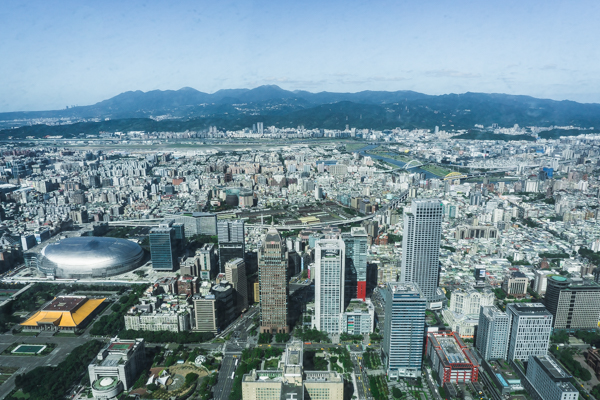
The 101 tower was the tallest building in the world when completed in 2004 until overtaken by the Burj Khalifa in Dubai in 2010. There’s a post box at the top so I quickly scribble some cards to my family. We scale new heights by going up to the observatory deck and it’s lovely to be out in the sunshine and get a more precipitous view while also watching some girls who are absorbed in taking selfies. On the way down we pass an enormous sphere which at 660 tons is the world’s largest and heaviest wind damper, anchoring the building from swaying in high winds (a worrying thought).
Down on the pavement there is a large love heart attracting a queue for Instagram poses. I give this a miss and get talking to a group of schoolboys who are collecting donations for a local, charity project. Their English is perfect (they come from the most prestigious private school in Taipei) and we have a really enjoyable, lively conversation. “Wow, you live in Dubai!” they exclaim before suggesting a group photo. More posing is going on in front of multi-coloured tiled walls. A group of women with their arms around each other roar with laughter; an old couple put their heads together in a quiet, contented way that’s lovely to obverse.
Lunch at Din Tai Fung
At the bottom of some steps in the basement of the 101 tower is the entrance to Din Tai Fung. The queues for this famous dumpling restaurant, which was started in Taipei, are always long at the branch in Dubai and here the lobby is full of people waiting to get a table. They mill around the shops checking the sign that displays the next number and how long the wait is (over an hour). Being with a guide means we go straight into the restaurant which is large, tables close together and people busily engrossed in eating. The dumpling makers are behind glass; dressed in white, wearing blue facemasks (so ubiquitous here) and pleating wrappers precisely at at speed. It looks like a space age factory and is utterly mesmerising. Tearing myself away, I sit at our table and the dishes of food are delivered thick and fast. They have been chosen for us so we just tuck in. Eddie demonstrates exactly how to eat the soup dumplings as there is a knack – not mastering it means risking a chin or t-shirt dripping with broth. I’d always wondered what the fuss was about but here the dumplings are sublime and I can’t stop myself from eating countless quantities of them, especially the pork-filled Xiao Long Bao. Pineapple cake and chocolate-filled dumplings leave us rolling out the door.
Contemplation at Chiang Kai-shek Memorial Hall
Walking through the gardens, it’s good to move our legs after such a feast and we climb the long, steep flight of stairs at the side of the Chiang Kai Shek memorial hall. The size of it and the towering, white walls made of Taiwanese marble is dramatic, causing a crick in your neck as you look up.
The 89 steps, match the age of Chiang Kai-shek when he died; he is a controversial figure in history. It’s quiet as we ascend, breathlessly, except for a young couple draping themselves over a bannister, poses captured by their photographer. Turning the corner we see crowds gathered at the entrance for the hourly changing of the guard in front of a bronze statue of Chiang Kai-shek (intentionally resembling the Lincoln statue in the US) but there is no way we can see over the throng. We’d rather gaze out, over a carved, marble mural of swirling clouds that cascades between the two staircases to Democracy boulevard, a wide area flanked by symmetrical gardens, borders clipped and lined with precise topiary. It leads the eye to the curved red roofs of the National Concert Hall and the National Theatre, both decorated in elaborate Chinese style; they stand on either side of Liberty Square ending with a grand gate at the entrance.
The whole site is promoted as a place dedicated to art and leisure. People practice Tai Chi, play chess, birdwatch and feed the wildlife. There are keep-fit paths and open spaces for exercise like stair climbing events organised via the ‘Meet Up’ app. As we stroll down, there is an excellent jazz band playing in the middle of the boulevarde with the Memorial building as a backdrop.
For all the beauty and enjoyment of this place, the Memorial stands in recognition of an authoritarian leader who crushed any dissent and presided over a time of great suffering. This included the February 28 Massacre and four decades – the longest period of martial law in world history – of ‘White Terror’. The deaths, disappearances and imprisonment of tens of thousands of people is still fresh in the collective memory of the Taiwanese people.
Given time there are extensive landscaped gardens to explore, with woods, waterfalls, ponds and ornamental bridges, but again we scratch the surface of this place. I don’t see any food places on our visit, but this would be the perfect place for a picnic. The sun is starting to go down as we leave and we don’t even squeeze in the obligatory pose in front of the main gate. A lazy afternoon’s exploration here would be a wonderful thing.
Submerge in hot springs at Beitou
It’s dark when our driver drops us at the door of the Radium Kagaya hotel and we are greeted by some women dressed like Japanese geishas and welcomed into the building. Immediately soothed by the calm interior of blonde wood and glass we say goodbye to Eddie and we’re whisked up in the lift, very unsure of what a Japanese hot spring experience is.
Beitou is part of Taipei but the hot spring village is in a verdant valley at the foot of a mountain range with a dormant volcano and close to a National Park. The area was developed during the Japanese rule of Taiwan. It went downhill for a time but today it’s a major tourism destination; a place where many locals from Taipei come to enjoy relaxation and a getaway from the city.
In a private room I put on my swimming costume and slip into a kind of sloping bath full of naturally scalding hot spring water. In my screen-centred life, it’s unusual to not be plugged into something distracting like a podcast or scrolling, so just lying there immersed in searingly hot water forced me to quieten my mind. I can see the appeal of the solitude, sharing the experience in a larger pool outside or gentle chatting with a group of friends. In other rooms there are more traditional, round, wooden tubs where people wallow for hours. Eddie is amazed that we’ve been such a short time and, with regret, we refuse a tea ceremony as we’re still full from our enormous lunch.
This would be a charming place to stay for longer and to experience the natural beauty of the area.
Serenity at the Bao’an temple
The Dalongdong streets are eerily quiet. We peer through the railings at the darkened Confucius temple which is open during the day and is now closed. In contrast, the Bao’an temple across the street gleams like a jewel and can be visited, free of charge, from early morning to late at night. Now given an award by UNESCO, it has been restored beautifully and the wooden carvings, dipping roof, intricate stonework of swirling dragons and lions and elaborate paintings glow in the candlelight of offerings as well as the electric variety.

An impression of the temple – without a tripod it was difficult to take great pictures the dark
The story of the temple’s evolution mirrors the turbulent history of Taipei. From its humble beginnings as a small, wooden shrine of worship by immigrants travelling across the sea from Tong-An in the Fujian province of China, it was rebuilt as a temple, and place of safety, as the population in Dalongdong grew. It survived occupation by the Japanese when they took it over for non-religious purposes, bombing during World War II, and as a shelter for homeless refugees for a couple of decades. A chequered restoration initiative gained traction in the 1980s and led to the exquisite and flawless complex of temples and shrines of today.
It’s a sensual overload walking through the carved gateway, with vibrant colours, stirring paintings and so much gold glowing through the mist of incense and scent of pink Taiwanese lilies. The layout is in accordance with the principle of Feng Shui which is said to attract good luck and ward off misfortune; it certainly feels like being enveloped in a cloak of calm tranquility. Without a tripod it’s difficult to take really good pictures in the dark so I wander around taking it all in, marveling at the different shrines, extravagantly ornamented rooms with altars bathed in gold, each dedicated to different deities, many to the natural forces of nature and those of daily life, from The Kitchen God to the Goddess of Childbirth. Worshippers give their offerings quietly and kneel to honour the gods, particularly the Bao Sheng Emperor to whom the temple is dedicated, who they pray to for good health. The visit, for me, is a spiritual experience in the modern sense and I leave with a lighter step.
If you only have time for one visit, the Bao’an temple is considered one of the top to visit in a city that’s home to many beautiful temples, dedicated to a blend of religions.
Visiting Taiwan
Two days in Taipei was just enough to get a good impression of all that the city has to offer but I really want to return for a deep dive into this fascinating place. Overall Taiwan was clean, friendly and had such a diverse range of things to do and experience.
I’ve been recommending a visit, very enthusiastically, to everyone who has asked me about my trip (that’s what I’m doing if you see me in the middle of a supermarket aisle nattering). The story of our travels out into the rest of the country will follow – there are so many really special things to share. I’ll put a link here once it’s live (and pop it into my monthly letter with some extra details too). Let me know if there’s anything else I can help with.
More info
Street markets: Ning Xia, near Dihua street (see above) is where Vibha and I went three times. Shilin Night Market has over 500 street food vendors in an underground food court. Raohe Night market, like Ning Xia, has three stalls that feature in the Michelin guide. Tonghua Night Market and Nanjichang Night Market are two more but you could spend at least a week exploring and not visit them all.
Where to stay: We stayed at the arTree boutique hotel which was really unique in style as everything was designed around nature. It was really comfortable with very spacious rooms, luxurious baths and intelligent loos! Very Zen. Breakfast was a large buffet selection of Taiwanese food.
Hiring a guide: Our guide Eddie soon tuned into what Vibha and I were really interested in as well as imparting a wealth of knowledgeable about this multi-layered city. Having a guide helped us jump some queues too (email me for Eddie’s Whatsapp details).
Restaurants: We ate street food, in the main, while in Taipei but visited the Peacock Bistro on Duahin street serving fusion food with organic ingredients, homemade preserves and great cocktails. Salt Peanuts, for coffee, buns and brunch is across the courtyard. Din Tai Fung is in the 101 building.
Further reference: Josh Ellis Photography for some beautiful pictures of the Baoan temple. There’s a comprehensive guide to the Beitou Hot Springs on Spiritual Travels (will make you want to go immediately).
Note: This trip and the flight was provided by The Taiwanese Tourist Board. Thanks to everyone who made the whole experience really special. All views remain my own, as always.
Comments are closed.

















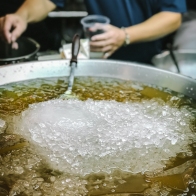










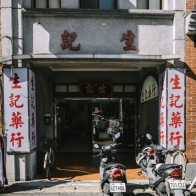


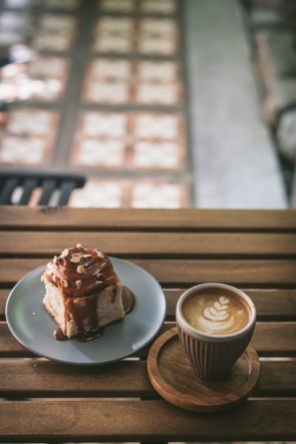






























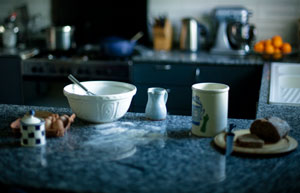







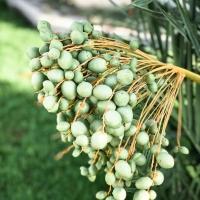
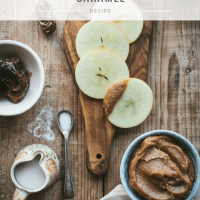
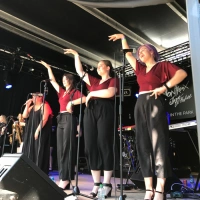
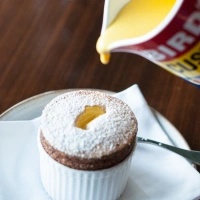
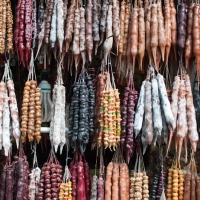

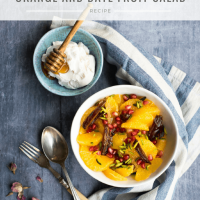
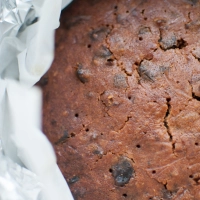







What an amazing trip. You’ve totally inspired me to visit Taiwan and Taipei – I want to see those street markets and eat everything! The hot springs sound like a great way to relax after sightseeing too.
Let me know if you get there (after the current craziness). I would go back at the drop of a hat. And the food is one of many good reasons to visit.
I’m planning to go to Taipei and a few other places in Taiwan next year. I will keep this article so I can go to some of the places you have recommended here.
I’m so glad Sally. I think you’ll have a wonderful time. I’m going to post more about the rest of the country soon(ish!) but in the meantime please drop me a line if I can help with any more info.
A thorough and fascinating article I have filed for quiet evening reading. Thank you ! In bygone years I have been to Hong Kong, both on business and for pleasure, some 30 times . . . have yet to make it over to Taiwan . . . cannot wait. Had a Dutch foodie friend spend a couple of weeks there last year, travelling from north to south – his appreciation of the food knew no bounds . . .
All the food that we ate was so delicious and it was fascinating to see the country via such a very different (for me) food culture. I’ve never visited Hong Kong sadly.
After reading all that, now Taiwan is in my my bucket list of places I should visit. have listed down the places and the food that will try. Thanks for the information